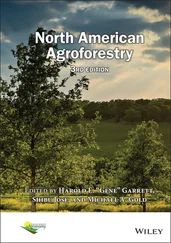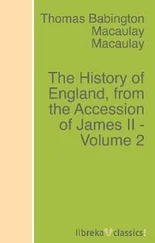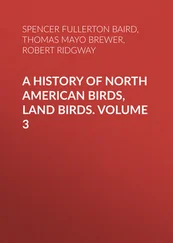Robert Ridgway - A History of North American Birds, Land Birds. Volume 1
Здесь есть возможность читать онлайн «Robert Ridgway - A History of North American Birds, Land Birds. Volume 1» — ознакомительный отрывок электронной книги совершенно бесплатно, а после прочтения отрывка купить полную версию. В некоторых случаях можно слушать аудио, скачать через торрент в формате fb2 и присутствует краткое содержание. Жанр: foreign_antique, Биология, foreign_edu, на английском языке. Описание произведения, (предисловие) а так же отзывы посетителей доступны на портале библиотеки ЛибКат.
- Название:A History of North American Birds, Land Birds. Volume 1
- Автор:
- Жанр:
- Год:неизвестен
- ISBN:нет данных
- Рейтинг книги:3 / 5. Голосов: 1
-
Избранное:Добавить в избранное
- Отзывы:
-
Ваша оценка:
- 60
- 1
- 2
- 3
- 4
- 5
A History of North American Birds, Land Birds. Volume 1: краткое содержание, описание и аннотация
Предлагаем к чтению аннотацию, описание, краткое содержание или предисловие (зависит от того, что написал сам автор книги «A History of North American Birds, Land Birds. Volume 1»). Если вы не нашли необходимую информацию о книге — напишите в комментариях, мы постараемся отыскать её.
A History of North American Birds, Land Birds. Volume 1 — читать онлайн ознакомительный отрывок
Ниже представлен текст книги, разбитый по страницам. Система сохранения места последней прочитанной страницы, позволяет с удобством читать онлайн бесплатно книгу «A History of North American Birds, Land Birds. Volume 1», без необходимости каждый раз заново искать на чём Вы остановились. Поставьте закладку, и сможете в любой момент перейти на страницу, на которой закончили чтение.
Интервал:
Закладка:
The volume on the Water Birds is in an advanced state of preparation, and will be published with the least possible delay.
SPENCER F. BAIRD.Smithsonian Institution, Washington,
January 8, 1874.
INTRODUCTION
The class of Birds ( Aves ), as represented in the present age of the world, is composed of very many species, closely related among themselves and distinguished by numerous characters common to all. For the purposes of the present work it is hardly necessary to attempt the definition of what constitutes a bird, the veriest tyro being able to decide as to the fact in regard to any North American animal. Nevertheless, for the sake of greater completeness, we may say that, compared with other classes, 1 1 We are indebted to Professor Theodore N. Gill for the present account of the characteristics of the class of Birds as distinguished from other vertebrates, pages XI-XV.
Birds are abranchiate vertebrates, with a brain filling the cranial cavity, the cerebral portion of which is moderately well developed, the corpora striata connected by a small anterior commissure (no corpus callosum developed), prosencephalic hemispheres large, the optic lobes lateral, the cerebellum transversely multifissured; the lungs and heart not separated by a diaphragm from the abdominal viscera; aortic arch single (the right only being developed); blood, with nucleated red corpuscles, undergoing a complete circulation, being received and transmitted by the right half of the quadrilocular heart to the lungs for aeration (and thus warmed), and afterwards returned by the other half through the system (there being no communication between the arterial and venous portions); skull with a single median convex condyle, chiefly on the basi-occipital (with the sutures for the most part early obliterated); the lower jaw with its rami ossifying from several points, connected with the skull by the intervention of a quadrate bone (homologous with the malleus); pelvis with ilia prolonged in front of the acetabulum, ischia and pubes nearly parallel with each other, and the ischia usually separated: anterior and posterior members much differentiated; the former modified for flight, with the humerus nearly parallel with the axis of the body and concealed in the muscles, the radius and ulna distinct, with two persistent carpal bones, and two to four digits; the legs with the bones peculiarly combined, (1) the proximal tarsal bones coalescing with the adjoining tibia, and (2) the distal tarsal coalescing with three (second, third, and fourth) metatarsals (the first metatarsal being free), and forming the so-called tarsometatarsus; dermal appendages developed as feathers: oviparous, the eggs being fertilized within the body, excluded with an oval, calcareous shell, and hatched at a temperature of about 104° F. (generally by the incubation upon them of the mother). 2 2 Dr. Coues, in his “Key to North American Birds,” gives an able and extended article on the general characteristics of birds, and on their internal and external anatomy, to which we refer our readers. A paper by Professor E. S. Morse in the “Annals of the New York Lyceum of Natural History” (X, 1869), “On the Carpus and Tarsus of Birds,” is of much scientific value.
Such are some of the features common to all the existing species of birds. 3 3 Carus and Gerstaecker (Handbuch der Zoologie, 1868, 191) present the following definition of birds as a class:— Aves. Skin covered wholly or in part with feathers. Anterior pair of limbs, converted into wings, generally used in flight; sometimes rudimentary. Occiput with a single condyle. Jaws encased in horny sheaths, which form a bill; lower jaw of several elements and articulated behind with a distinct quadrate bone attached to the skull. Heart with double auricle and double ventricle. Air-spaces connected to a greater or less extent with the lungs; the skeleton more or less pneumatic. Diaphragm incomplete. Pelvis generally open. Reproduction by eggs, fertilized within the body, and hatched externally, either by incubation or by solar heat; the shells calcareous and hard.
Many others might be enumerated, but only those are given which contrast with the characteristics of the mammals on the one hand and those of the reptiles on the other. The inferior vertebrates are distinguished by so many salient characters and are so widely separated from the higher that they need not be compared with the present class.
Although birds are of course readily recognizable by the observer, and are definable at once, existing under present conditions, as warm-blooded vertebrates, with the anterior members primitively adapted for flight,—they are sometimes abortive,—and covered with feathers, such characteristics do not suffice to enable us to appreciate the relations of the class. The characteristics have been given more fully in order to permit a comparison between the members of the class and those of the mammals and reptiles. The class is without exception the most homogeneous in the animal kingdom; and among the living forms less differences are observable than between the representatives of many natural orders among other classes. But still the differences between them and the other existing forms are sufficient, perhaps, to authorize the distinction of the group as a class, and such rank has always been allowed excepting by one recent naturalist.
But if we further compare the characters of the class, it becomes evident that those shared in common with the reptiles are much more numerous than those shared with the mammals. In this respect the views of naturalists have changed within recent years. Formerly the two characteristics shared with the mammals—the quadrilocular heart and warm blood—were deemed evidences of the close affinity of the two groups, and they were consequently combined as a section of the vertebrates, under the name of Warm-blooded Vertebrates. But recently the tendency has been, and very justly, to consider the birds and reptiles as members of a common group, separated on the one hand from the mammals and on the other from the batrachians; and to this combination of birds and reptiles has been given the name Sauropsida .
As already indicated, the range of variation within this class is extremely limited; and if our views respecting the taxonomic value of the subdivisions are influenced by this condition of things, we are obliged to deny to the groups of living birds the right which has generally been conceded of ranking as orders.
The greatest distinctions existing among the living members of the class are exhibited on the one hand by the Ostriches and Kiwis and the related forms, and on the other by all the remaining birds.
These contrasted groups have been regarded by Professor Huxley as of ordinal value; but the differences are so slight, in comparison with those which have received ordinal distinction in other classes, that the expediency of giving them that value is extremely doubtful; and they can be combined into one order, which may appropriately bear the name of Eurhipidura .
An objection has been urged to this depreciation of the value of the subdivisions of the class, on the ground that the peculiar adaptation for flight, which is the prominent characteristic of birds, is incapable of being combined with a wider range of form. This is, at most, an explanation of the cause of the slight range of variation, and should not therefore affect the exposition of the fact (thereby admitted) in a classification based on morphological characteristics. But it must also be borne in mind that flight is by no means incompatible with extreme modifications, not only of the organs of flight, but of other parts, as is well exemplified in the case of bats and the extinct pterodactyls.
Читать дальшеИнтервал:
Закладка:
Похожие книги на «A History of North American Birds, Land Birds. Volume 1»
Представляем Вашему вниманию похожие книги на «A History of North American Birds, Land Birds. Volume 1» списком для выбора. Мы отобрали схожую по названию и смыслу литературу в надежде предоставить читателям больше вариантов отыскать новые, интересные, ещё непрочитанные произведения.
Обсуждение, отзывы о книге «A History of North American Birds, Land Birds. Volume 1» и просто собственные мнения читателей. Оставьте ваши комментарии, напишите, что Вы думаете о произведении, его смысле или главных героях. Укажите что конкретно понравилось, а что нет, и почему Вы так считаете.












